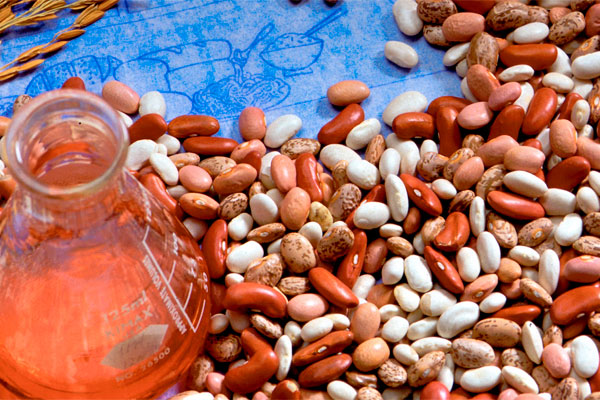Optimum vitamin nutrition

Research has shown us animals’ genetic potential in terms of health, growth and feed efficiency. Vitamins contribute significantly to production economy and animal welfare.
By Gilberto Litta, global category manager vitamins, DSM
Just 25 grams of vitamins in one kilogramme of compound feed can make a big difference for animals. Where the inclusion of a specific vitamin is 5-50 grams per tonne of finished feed, a high precision of mixing dispersion is required. We cannot ignore some pitfalls in practice, but it can ensure success without loss of performance when product quality, formulation and shelf life are optimally maintained.
Vitamins – once called as ‘vital amines’ have a wide range of animal response from the low end with deficiency symptoms through the middle range where are curvilinear relationships with animal performance to the top end with high dosages where the additional effect is focused on special applications like to boost immune response or meat quality traits. The ideal is to maintain an optimum level of vitamin inputs from both animal performance and economical points of view. Figure 1 illustrates the general performance response in a range of vitamin inputs.
Vitamins – Definitions & Functions
Vitamins are essential for the life and well-being of the animal in all growth stages, whether sows or boars. Vitamins are characterised by two basic properties:
1. The daily requirement for each vitamin is very small usually measured in micrograms or milligrams.
2. Vitamins are organic compounds and hence differ in this respect from trace mineral nutrients.
Vitamins express catalytic functions: they can facilitate both synthesis and degradation of other nutrients and therefore play a major role in the general metabolism. They are always required for optimum health and normal physiological functions such as growth, body development and reproduction.
Most vitamins cannot be synthesised by the animals and they must be obtained from feed. Table 1 lists the major vitamins required in animal nutrition and the basic functions. Many compounds impact on general growth, feed efficiency and health status.
Deficiency symptoms in pigs
On the following page are three images showing deficiency symptoms in pigs.
Image 1: severe necrosis due to biotin deficiency.
Image 2: splayed hind legs due to pantothenic acid deficiency.
Image 3: navel bleeding due to a vitamin C deficient sow. Among the causes of vitamin deficiencies are: (a) inadequate feed intake which is inextricably linked to vitamin intake, (b) the presence of vitamin antagonists, (c) mixing errors and suboptimal formulation (d) poor digestion, hence absorption due to chronic or acute diseases.
Vitamin requirements
Specific vitamin requirements are also variable and are influenced by the interactive effects of each vitamin. Fat soluble vitamins, for example, must be fed in correct proportion as they all compete for intestinal absorption. Water soluble vitamins are also regulators of the intermediary metabolism of protein, fats and carbohydrates and a lack of any one increases the need for the others.
Figure 2 sketches the vitamin interactions. Most vitamins listed in Table 1 have interactive functions both in energy metabolism via Krebs Cycle and in protein deposition and lean tissue growth via amino acid pool. It is a challenge for nutritionists to apply specific values for each growth phase of animals.
A continuous game for farm managers
Vitamins have a small inclusion ratio in the diet but they have essential impacts on growth, feed efficiency and reproduction. Some of them can even have an effect on carcass quality. However, genetic improvements constantly change the game. Due to the constant genetic change in either growing pigs or broilers, DSM estimates that there is probably a 1% increase every year in overall vitamin requirements. Another consequence is that feed intake tends to be reduced over time as the feed conversion ratio improves.
Thus a revision of the actual in-feed concentrations of vitamins is required. Furthermore, intensive livestock farming with high livestock density can induce chronic stress reactions in the animals. This also impacts on vitamin requirements and in feed concentrations. Unexplained growth depression and anorexia or loss of prolificacy can be for a number of nutritional reasons and not the least be sub-clinical disease or mycotoxins.
It is also certainly the case that on-farm problems stem from inadequate applications of vitamins. This might be poor formulation values or due to inferior product quality in terms of mixing and dispersion, heat treatment, storage and preservation.
At the end of the day, optimisation across all parameters and elements involved, is the key to successful livestock farming.
DSM Nutritional Products have been in the vitamin manufacturing and supply business for many years and have also conducted and commissioned much fundamental and practical research in this area. They have developed the concept illustrated in figure 1 further with the OVM programme or optimum vitamin nutrition concept. This aims to provide working commercial nutritionists andnutritional advisers to home mixers with effective tools and guidelines for high precision formulation.











